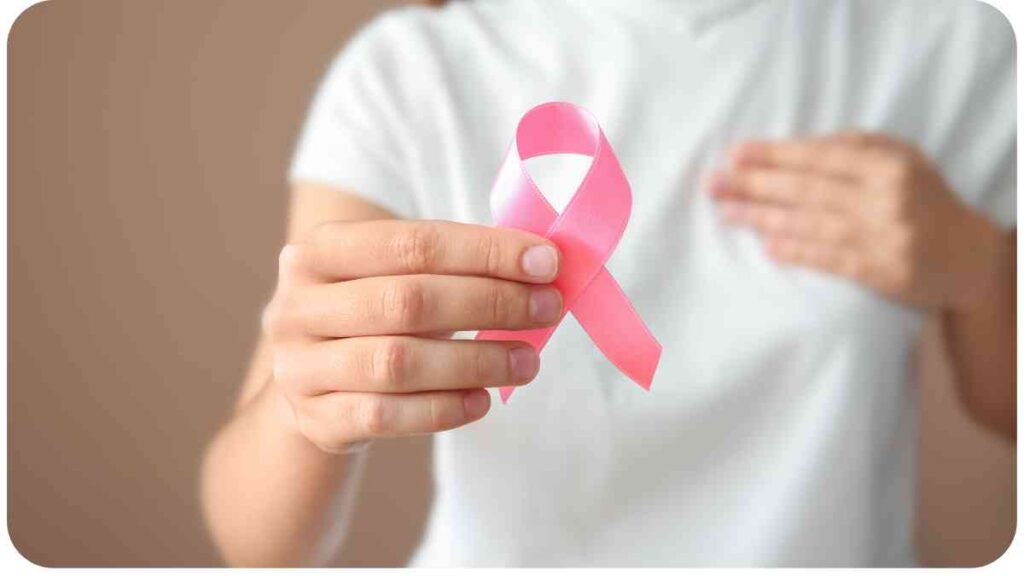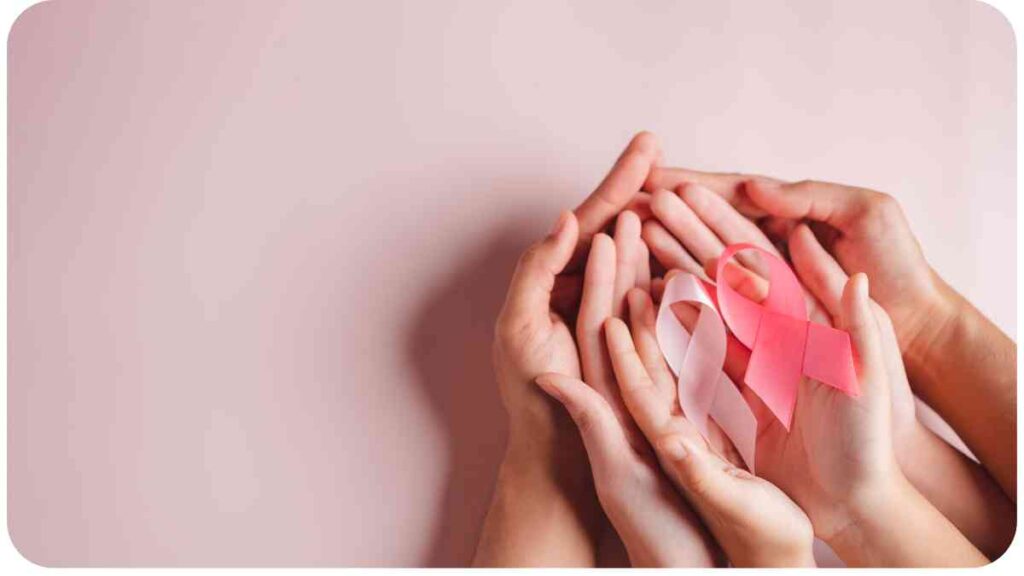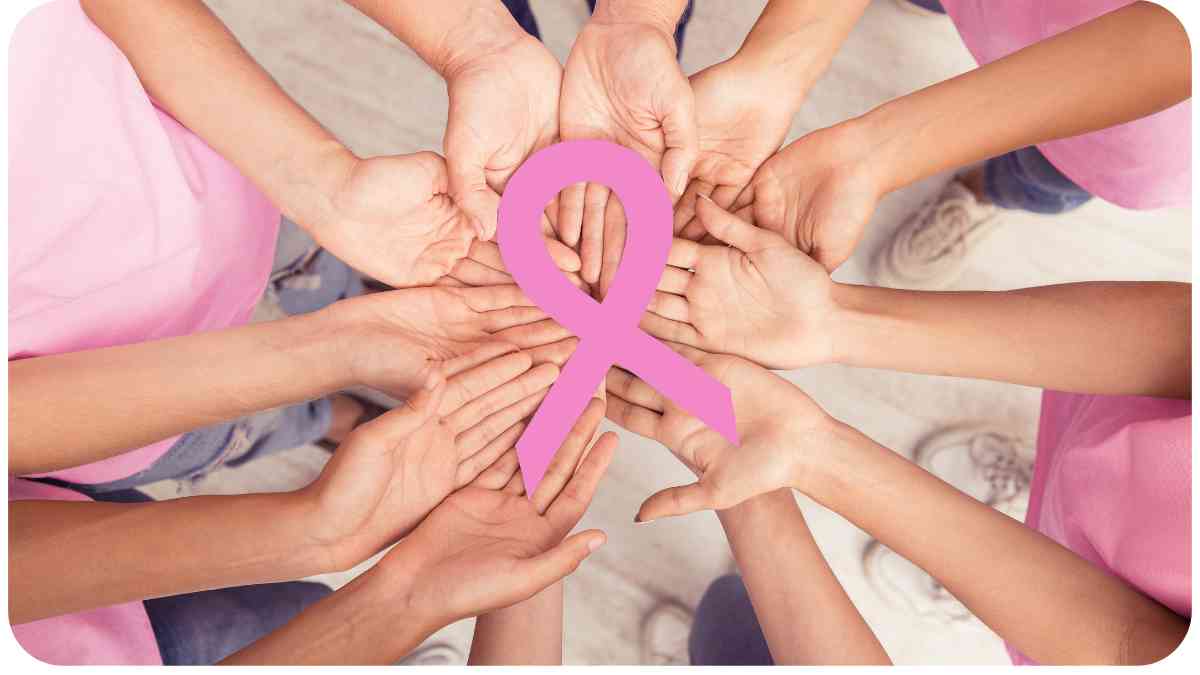When you see a pink ribbon, what comes to mind? Is it a simple piece of ribbon in a striking shade of pink, or does it symbolize something more profound? In this article, we’ll delve deep into the significance of the pink ribbon, exploring its origin, symbolism, and the global movement it has sparked.
Let’s begin by understanding the history behind the pink ribbon and how it has evolved into a powerful emblem of hope, strength, and unity.
| Takeaway |
|---|
| The pink ribbon symbolizes unity and support |
| Early detection is crucial for breast cancer |
| Support through personal stories is inspiring |
| Volunteering and donations make a difference |
| Stay informed and involved in the cause |
2. The Origin of the Pink Ribbon
The pink ribbon, now synonymous with breast cancer awareness, had humble beginnings. It first emerged in the early 1990s when a grassroots effort sought to promote awareness of breast cancer and the importance of early detection.
Understanding the significance of a pink ribbon goes beyond its color. It symbolizes hope and unity in the fight against breast cancer.
Below is a table highlighting key milestones in the evolution of the pink ribbon:
| Year | Milestone |
| 1991 | Susan G. Komen Foundation adopts the pink ribbon |
| 1992 | Estée Lauder introduces the Pink Ribbon Campaign |
| 2006 | Global Illumination initiative begins |
| 2020 | 30th Anniversary of the pink ribbon |
The pink ribbon’s journey from a local symbol to a global phenomenon is a testament to the power of collective action and the urgency of the cause.
3. The Symbolism of the Pink Ribbon

The pink ribbon is more than just a ribbon; it’s a symbol of solidarity, awareness, and support for those affected by breast cancer. It represents the strength of survivors, the determination of those undergoing treatment, and the memory of those lost to this disease.
In times of grief, a strong support system can provide solace and healing, just like the pink ribbon signifies hope.
Let’s break down the symbolism further in this table:
| Symbolism | Meaning |
| Pink Color | Femininity and compassion |
| Ribbon Shape | Unity and a continuous commitment |
| Awareness | Early detection and prevention |
| Support | Emotional and financial assistance |
| Hope | A brighter future without breast cancer |
Understanding these elements helps us appreciate the significance of the pink ribbon in the fight against breast cancer.
4. Breast Cancer Awareness
Breast cancer awareness is at the core of the pink ribbon movement. It encompasses various aspects, including:
4.1. Early Detection
Early detection is a critical factor in improving breast cancer outcomes. Regular self-exams and mammograms are key to catching the disease at its earliest, most treatable stages.
Here’s a table summarizing the recommended breast cancer screening guidelines:
| Age Group | Screening Recommendations |
| 20-39 | Clinical breast exams every 1-3 years |
| 40 and older | Annual mammograms |
4.2. Support for Patients
A breast cancer diagnosis is life-altering, and patients often need comprehensive support. This support can range from emotional counseling to practical assistance with daily tasks during treatment.
Amidst loss, finding strength within a community is akin to the solidarity found in breast cancer awareness.
4.3. Fundraising Efforts
Fundraising plays a crucial role in advancing breast cancer research, treatment, and support services. Many organizations use the pink ribbon as a symbol for their fundraising campaigns.
Let’s explore some notable fundraising initiatives in this table:
| Campaign | Impact |
| Race for the Cure | Millions raised for research |
| Making Strides | Supporting survivors |
| Pinktober | Awareness and fundraising |
| Pink Products | Proceeds to breast cancer orgs |
These campaigns highlight the power of collective action and the role of the pink ribbon in fundraising efforts.
5. The Pink Ribbon Movement

The pink ribbon movement has transcended borders, becoming a global phenomenon with far-reaching effects.
5.1. International Impact
Breast cancer is a global health concern, and the pink ribbon has become a unifying symbol for people worldwide. It transcends language and cultural barriers, fostering a sense of international solidarity.
In this table, let’s examine the international presence of the pink ribbon:
| Country | Notable Pink Ribbon Initiatives |
| United States | Susan G. Komen Foundation |
| Canada | Canadian Cancer Society |
| United Kingdom | Breast Cancer Now |
| Australia | National Breast Cancer Foundation |
5.2. Famous Pink Ribbon Campaigns
Over the years, several famous campaigns have embraced the pink ribbon to raise awareness and funds for breast cancer research and support.
Stay tuned for insights into these campaigns and the impact they’ve had.
Let’s dive into some renowned pink ribbon campaigns that have left a lasting mark on the breast cancer awareness movement.
Explore the profound impact of social media in coping with grief, a tool also leveraged in breast cancer advocacy.
Avon Breast Cancer Crusade
| Year Launched | Key Achievements |
| 1992 | Raised over $800 million globally for breast cancer |
| 2020 | Continued support for access to care and research |
| Impact | Empowered millions of women with information and support |
NFL Crucial Catch Campaign
| Year Launched | Key Highlights |
| 2009 | Partnered with the American Cancer Society |
| 2021 | Expanding the initiative beyond breast cancer |
| Impact | Millions raised, screenings provided, lives touched |
Think Pink, Live Green
| Year Launched | Notable Features |
| 2007 | Focus on environmental risk factors |
| 2022 | Advocacy for reducing chemical exposures |
| Impact | Bridging the gap between health and the environment |
These campaigns have leveraged the pink ribbon’s visibility to make a significant difference in the fight against breast cancer.
6. Wearing the Pink Ribbon
Wearing a pink ribbon signifies your support for the cause. It’s a simple yet powerful way to show solidarity with those affected by breast cancer.
Discover the pivotal role of counseling in the journey to recovery, which extends to those facing breast cancer challenges.
Here’s a table showcasing various ways people wear the pink ribbon:
| Wearing the Pink Ribbon | Significance |
| Lapel Pins | Everyday awareness |
| Clothing | Bold fashion statements |
| Accessories | Subtle but meaningful additions to outfits |
| Tattoos | Permanent symbols of commitment |
No matter how you choose to wear it, the pink ribbon sends a strong message of support.
7. The Color Pink and Its Impact

The color pink has become synonymous with breast cancer awareness. It’s a color that evokes feelings of compassion, love, and hope.
Let’s explore the psychological impact of the color pink in this table:
| Psychological Effects | Meaning and Impact |
| Calming | Eases anxiety and stress |
| Nurturing | Evokes feelings of care and support |
| Positive Associations | Associated with love and optimism |
| Attention-Grabbing | Draws focus to the cause and its importance |
8. The Emotional Journey of Breast Cancer
Breast cancer is not just a physical battle; it’s an emotional one as well. Understanding the emotional aspects is crucial in supporting those affected by the disease.
8.1. Personal Stories of Resilience
Hearing personal stories of breast cancer survivors can be incredibly inspiring. These stories highlight the strength and resilience of individuals facing this challenging journey.
Here’s a table featuring quotes from breast cancer survivors:
| Survivor Quote | Message of Resilience |
| “I am stronger than cancer.” | Empowerment in adversity |
| “Each day is a victory.” | Celebrating small wins |
| “I found my inner warrior.” | Discovering hidden strength |
| “Cancer won’t define me.” | Maintaining personal identity |
8.2. Coping Strategies
Coping with breast cancer involves various strategies, both for patients and their loved ones. It’s essential to have a support system and access to resources for emotional well-being.
In the table below, let’s outline some effective coping strategies:
| Coping Strategy | Benefits |
| Support Groups | Emotional support and shared experiences |
| Counseling and Therapy | Coping skills and stress management |
| Mindfulness and Meditation | Reducing anxiety and promoting relaxation |
| Expressive Arts and Creativity | Emotional expression and healing |
By sharing coping strategies, we can provide valuable tools for individuals navigating the emotional challenges of breast cancer.
9. Supporting the Cause
Supporting the breast cancer cause goes beyond wearing a ribbon. There are numerous ways you can make a meaningful impact.
9.1. Volunteering
Volunteering your time and skills can be a powerful way to contribute to breast cancer awareness and support efforts.
Here’s a table highlighting volunteer opportunities:
| Volunteer Role | Impact |
| Event Organizer | Fundraising and community engagement |
| Peer Support | Providing emotional support to patients |
| Public Speaker | Raising awareness through public speaking |
| Online Advocate | Using social media to spread information |
9.2. Donations
Donations play a crucial role in funding research, support services, and awareness campaigns. Every contribution, no matter the size, makes a difference.
In this table, let’s explore where your donations can make an impact:
| Donation Destination | How Your Contribution Helps |
| Research Organizations | Advancing scientific breakthroughs |
| Support Services | Providing resources and assistance to patients |
| Awareness Campaigns | Expanding the reach of breast cancer education |
| Access to Mammograms | Promoting early detection and prevention |
9.3. Participating in Awareness Events
Participating in breast cancer awareness events can be both impactful and fulfilling. These events raise funds and promote community support.
Here are some notable breast cancer awareness events:
| Awareness Event | Purpose and Impact |
| Susan G. Komen Race for the Cure | Raising funds and awareness |
| Making Strides Against Breast Cancer | Supporting survivors |
| Pinktober | Month-long awareness campaigns |
| Local Fundraising Walks | Community engagement and support |
Engaging in these events fosters a sense of unity in the fight against breast cancer.
10. Misconceptions and Criticisms
While the pink ribbon has made significant strides in raising awareness, it has also faced its share of misconceptions and criticisms. Let’s address some of these concerns.
It’s important to acknowledge the misconceptions and criticisms surrounding the pink ribbon to foster a balanced perspective on breast cancer awareness.
Misconception: “All Pink Ribbon Products Directly Fund Research”
While many pink ribbon products contribute to breast cancer causes, not all of them directly fund research. Some may allocate only a portion of the proceeds to support services or awareness campaigns. It’s essential to research the product and the organization behind it to understand its impact fully.
Criticism: “Pinkwashing”
Critics have coined the term “pinkwashing” to describe situations where companies use the pink ribbon for profit without genuinely supporting breast cancer causes. This criticism emphasizes the need for transparency and accountability in pink ribbon partnerships.
Misconception: “Breast Cancer Only Affects Women”
While breast cancer is more common in women, it can affect men as well. Men should also be aware of the risk factors and symptoms associated with breast cancer.
Criticism: “Oversimplification”
Some argue that the pink ribbon’s symbolism oversimplifies the complexities of breast cancer. Breast cancer comes in various forms, each with its unique challenges. Critics emphasize the need for a more nuanced conversation about the disease.
11. The Future of the Pink Ribbon
The pink ribbon has come a long way, but what does the future hold for this symbol of breast cancer awareness?
In this table, let’s explore potential directions for the pink ribbon’s future:
| Future Directions | Potential Outcomes |
| Increased Inclusivity | Representation for all affected |
| Research Advancements | Breakthroughs in detection and treatment |
| Greater Transparency | Clearer communication from organizations |
| Empowerment and Education | Informed decisions and early detection |
The pink ribbon’s continued evolution will likely involve addressing current criticisms and adapting to meet the evolving needs of the breast cancer community.
12. Pink Ribbon Products
The pink ribbon has inspired a wide range of products, from clothing to beauty items. These products aim to raise awareness and funds for breast cancer causes.
Here’s a table featuring some popular pink ribbon products and their impact:
| Pink Ribbon Products | Impact on Breast Cancer Causes |
| Pink Ribbon T-Shirts | Spreading awareness and starting conversations |
| Pink Beauty Collections | Donating a portion of sales to research |
| Pink Household Items | Supporting support services and education |
| Pink Ribbon Jewelry | Fundraising for various breast cancer programs |
By choosing pink ribbon products wisely, consumers can contribute to the cause while enjoying quality goods.
13. Staying Informed and Involved
To make a meaningful difference in the fight against breast cancer, it’s essential to stay informed and involved in ongoing efforts.
In this table, we’ll outline ways to stay informed and engaged:
| Staying Informed and Involved | Impact on Awareness and Support |
| Regular Health Checkups | Early detection and prevention |
| Following Breast Cancer News | Staying updated on research and advancements |
| Joining Support Groups | Emotional support and shared experiences |
| Participating in Events | Contributing to fundraising and community |
Being proactive and engaged can lead to positive change and greater awareness.
14. Conclusion
In conclusion, the pink ribbon is far more than a symbol; it’s a beacon of hope, unity, and resilience in the face of breast cancer. From its humble beginnings to its global impact, the pink ribbon has played a pivotal role in raising awareness, supporting patients, and funding research.
As we move forward, it’s important to address misconceptions, embrace inclusivity, and ensure transparency in pink ribbon partnerships. The future of the pink ribbon holds the promise of greater empowerment, education, and advancements in breast cancer detection and treatment.
By wearing the pink ribbon, supporting fundraising efforts, and staying informed, we can all play a part in the ongoing fight against breast cancer. Together, we can make a difference and offer hope to those affected by this disease.
15. Additional Resources
For more information and resources on breast cancer awareness and support, please refer to the following organizations and websites:
- Susan G. Komen Foundation
- American Cancer Society
- BreastCancer.org
- National Breast Cancer Foundation
Thank you for taking the time to learn about the significance of the pink ribbon and its role in the battle against breast cancer. Your awareness and involvement matter, and they contribute to a brighter, pinker future.
Further Reading
Here are some additional resources to explore for further information on the pink ribbon and its significance:
- Wikipedia: Pink Ribbon
- Learn more about the history, symbolism, and global impact of the pink ribbon in breast cancer awareness.
- The Pink Ribbon Story (PDF)
- Delve into the comprehensive story behind the pink ribbon, its evolution, and its role in breast cancer awareness.
- The Meaning of the Pink Ribbon
- Explore the emotional and cultural significance of the pink ribbon, shedding light on its deeper meaning beyond symbolism.
FAQs
What is the history of the pink ribbon?
The pink ribbon’s history dates back to the early 1990s when it became associated with breast cancer awareness. It has since evolved into a global symbol of support.
How can I get involved in breast cancer awareness campaigns?
You can get involved by volunteering, participating in awareness events, or purchasing pink ribbon products that contribute to the cause.
What does wearing a pink ribbon signify?
Wearing a pink ribbon signifies your support for breast cancer awareness and your commitment to early detection and prevention.
Are there criticisms of the pink ribbon movement?
Yes, there are criticisms, including concerns about “pinkwashing” and oversimplification of the complex issues surrounding breast cancer.
Where can I find more information on breast cancer research and support?
Organizations like Susan G. Komen Foundation, American Cancer Society, and BreastCancer.org offer valuable resources on breast cancer research, support services, and awareness campaigns.

My name is Hellen James. I’m a grief and loss recovery expert who has helped people across the country to move beyond their grief and move forward with their lives.


